
Replacement Race for LM11949 Bearing

- All Info
- Reviews (53)
- Q & A (0)
- Videos (2)
- Photos
etrailer Trailer Bearings Races Seals Caps - LM11910
- Races
- Standard Races
- 3000 lbs Axle
- 1.781 Inch O.D.
- Bearing LM11949
- etrailer
- Race LM11910
Race provides smooth surface for bearing to roll on inside of trailer hub. Works with LM11949 bearing. Replacement part uses industry-standard number.
Features:
- Outer diameter: 1.781"
- Matching bearing (sold separately): LM11949
LM11910 Replacement Trailer Hub Race
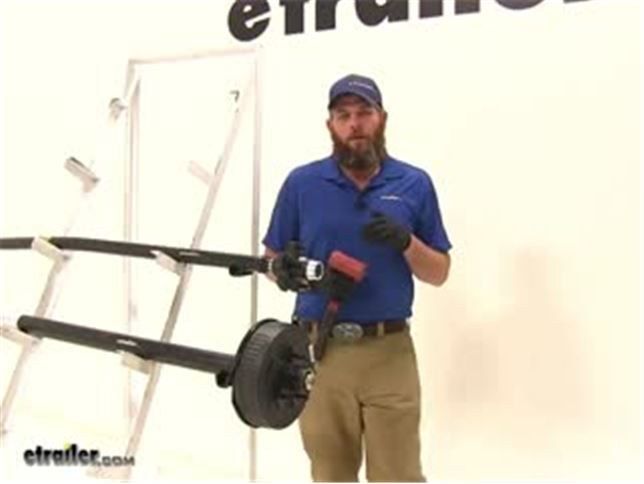

Videos are provided as a guide only. Refer to manufacturer installation instructions and specs for complete information.
Video Transcript for Trailer Bearings Races Seals and Caps Rebuild
Speaker 1: Today we're going to take you through the rebuild process on a couple of hubs. We've got an idler hub, and here we've got a hub and drum assembly. Works with electric rigs, but this can also work for just standard discs, if you've got a disc brake style setup.Basically what we're going to show you is how to get all of the bearings out. How to remove the seal. How to remove the race's if they're damaged, then get them replaced in the proper manner. We'll show you how to use an easy loop hub, which we have here.The first thing we are going to need to do is, get the grease cap off the end.
It can have either a rubber plug in it like this one does, or it can be a solid metal cap.These are pressed fit in there, basically by tapping on them on the back side. To remove them, a deadbolt hammer is typically what we're going to use. We're just going to start tapping as we go around. You'll see a little separation start right here, and slowly it'll work it's way off.Now the next step's going to vary a little bit depending on your axle setup. Do you see this is going to have a keeper that goes around the nut.
And that prevents that from being backed off, or removed. A lot of times you'll have a castle nut, which will have just little tabs that stick off, and there will be a cotter pin that passes through it. Just depending on your application, you need to get the keeper for the nut off. This style we just kind of pry out. A cotter pin you would just remove of course.Once we have that off ...
We'll start to take off the nut here, and the washer that's in behind it. Now yours should look a whole lot more dirty than this. There should be a lot of grease packed in, and through the hub, this one's brand new. We thought it'd be nice to show you the components before the grease was on .. Of our washer that comes off.And then here we're going to have our outer bearing.
Continue to pull that. We're gonig to have our inner bearing here. That sits in the backside of the hub. And we didn't put it in yet, we will show you how to put it in. But a seal would typically be covering the backside here. We'll show you how to use a seal removal tool, or another tool. To get that pried up and out. To get an access to that inner bearing.Now for a drum style like this, that process for disassembly is going to be just the same. One thing to keep in mind if you're using a disc brake setup. You'll have to remove the caliper before the disc is going to come off.Now once we have the spindle exposed, as we said this is going to be really greasy. We want to get all the grease removed, and the first thing we'll do is inspect it. We want to make sure that it looks just like what we have here. Everything's nice and smooth. We don't see any kind of discoloration, or any marring on the metal. Indicating that our bearing's got hot.If you do have any of those symptoms, at this point it's time to replace those bearings. You don't want to repack them. Get new bearings, and put in there. You might have a bearing that's come apart in here. Another surface to ensure is in good condition, is where your seal is going to go. That helps seal all the grease inside of our hub. With a damaged or broken seal, that grease is going to seep out. Either out of the hub, or in this case into our brake assembly.Now if your axle has brakes, we're also going to check the disc. Make sure it doesn't have any issues, or your hub. And this is going to be a hub and drum assembly. The brakes are going to ride on this machine surface. You're going to check that for signs of excessive heat, discoloration, or cracking. And this is our magnet surface. We'll check that surface for the same issues.Now inside the hub regardless if it's a disc brake, it's a drum brake like this. Or just a standard idler style hub. You're going to have an outer race. Would be right here, it's a small tapered piece of metal your bearing sits in, and rotates on. That's basically the outer portion of the bearing.You have the same thing here on the backside. This is called the inner race. Now if those show any signs of wear, overheating, or cracking. Those are also something we'll need to replace, which we'll show you how to do in just a minute.Now, with your brake assembly exposed, if you do have electric brakes like we have here. It's a good idea to check all the components for wear, cracking, maybe missing pieces. Check your pad thickness to make sure those are in good shape. Basically if you have a non working brake assembly and you put everything back together, you're just going to have to take it apart and do it all over again to get back to the brake assembly. This gives you a really good option to be able to change them out.And most applications are going to use a four, or maybe a five bolt flange to hold them in place. And you'll just remove the lock nuts, or sometimes you'll have a hex nut with a lock washer. You want to remove those, and then simply slide your assembly off after you cut the wiring.The friction material itself should also be checked for any kinds of cracking, or overheating. If you have any grease inside the system at all, it's likely it's gotten on those pads. It's a good idea to get those changed. Now as far as the removal of the races go, it's going to be just the same whether we're using an idler style hub like we have here. A drum brake like we have here. You can basically see where the idler is, here in the middle of the hub. It's going to go all the way around there, and we just have this extra material here to provide our braking surface.Now if you're doing a disc brake style job again, it's going to be just the same here with the races living inside of the actual hub portion. You'll just have the discs there for the brakes to make contact. We're going to use this little bit smaller one, it's a little bit easier to manage to show you how to get these out. We've talked about where the races are. The outer here, the inner being closer to the inside, but on the backside of the race there's a little lip. That lip's meant to stick out just a little bit further than the hub, and provide us an area to put our tool on, and help to drive that out.If you look all the way through there on that inner race, you'll see that little lip that sticks out just from the hub slightly, and it gives us enough area to use our tool on. Now generally to remove these you're going to use a punch, similar to this. Some guys will use a screwdriver. Or a piece of pipe. If you have a piece of pipe that's small enough to fit inside of that diameter, you can take that down through and allow it to rest on that lip.Use our punch, and then just need a hammer. And we'll start working that out. We're going to tap all the way around. Kind of equally, and evenly apply the force to get it to come on out of the bottom for us.You can see now as it starts to come out there's going to be a little gap created between the hub and the race. And we can just keep going, bringing it on out. Then you can inspect the inside of the hub surface there. Make sure no damage or anything has occurred, and repeat that same process for the outer race if you plan on removing and replacing that one.Now in the outer flat edge, you can see we're going to have our tapered edge on this side. If we roll our race over to the flat side, typically there's going to be a manufacturers part number on there. That will help you identify which race it is, that you need to go back in your system. If those are rubbed off, worn off, if you can't read them. You can measure the outside, to outside diameter of the race here. It's a good idea to use a micrometer to get it exact.Now here's your basic micrometer. And again, the outside of the race is what we're going to need to measure. You want to go . I set the thickest point there. Looks like this one's going to be about 1.98. That's going to be the measurement you'll want to supply.Now while we've got this out, let's also look at the proper way to measure our bearing. Instead of the outside for the bearing, we need to measure the inside diameter. That's going to be pretty simple. Let's pull that out, find the largest measurement we can. Which here, looks like it's going to be 1.03. With that information, we'll be able to get the correct bearing, and the correct race, so they'll fit together properly and make a full bearing kit for us.Now here's the race, we're going to show you how to get this put back in. Basically just going to press fit inside of our hubs. We need to get it down on there. Kind of like that. And you'll have a couple options. A lot of times you're going to see do it yourself or at homer, just going to use a wooden block. Just place it on there. That's going to get you started, but at that point you'll struggle in getting it to go all the way down into it's seat.Now to take care of that problem, there are several seal drivers that are available. Seal and race drivers that are available out there on the market. It's designed to fit down inside of our race, inside of our hub and get it down there where it needs to go. This is part number ptw83020, has several different sizes, even if you have multiple trailers it's going to do the job.Now the side with the angle on it, is designed to fit down inside of our race. If we use the other side, that's going to be for driving your seal into place. Just want to hold it, and take it on in with your hammer. You'll see, you just want to insure that our race is all the way up against that line on the hub where it's supposed to mate to.Now when it comes time to pack your bearings you're going to have several different ways of doing this. You can just use your hand, is the traditional method. That's going to be the method probably reserved for the very occasional trailer work kind of situation. If you do it once or twice a year, probably get away with it that way.Next you would go to a, kind of a sandwich funnel style almost. If you look inside of there, you can see the bearing. It's located between the two pieces. Just use a grease gun. Start filling that with grease, and that's going to fill our bearing for us. And the third, with this one you're just going to place your bearing down and in. It should be pretty close to center. And then we've got our cone her that's going to go down and secure that.Now I think this style, wastes a little bit more grease than what this style will. This has a dust cap. You can see, you can keep your grease in there, put your dust cap on there and save it for later use. This will be if your going to do it every couple years. And this particular style would be if you're a more regular user.Let's start by showing you how to use a bearing packer. Similar to this. Again, we've just got our grease inaudible 00:11:07 here on the top. And then just slowly start to fill it. Now I like this style quite a bit. I think even regular users might enjoy it, because you can get a really quick visual look at that bearing. You're not going to have to overdo it, or have to much grease.You can kind of see in there now, we're starting to get grease to come out of it. Couple more pumps, we'll be good. You can see we've got grease coming out all the way around. Where all of our bearings are. Got a little bit of excess there. Just take that around the outside of it. And then we should be able to lift it off. And now you can see what we we're talking about. Just a little bit of excess there, that you're just going to wind up wasting.Now we'll take our bearing, we're going to place it right down in our race. And then we'll cap off the back with our seal. Right now our seal's going to fit in just like our race did. It's going to have a little bit of a pressure fit to it. Now very often in this situation, I see people using the four by four method. Kind of here, just placing that on and tapping it. As an option though, if you do have one of these. You can see that's designed to fit right on the top of the seal. And help drive it in.The biggest thing here is, just going to be getting it driven in squarely. You can see, this side's in a little bit further than this side. I'm going to start this side first. Now since we didn't have the opportunity to show you before, we're going to take a look at pulling a seal. Now this is a seal puller, we carry this on our website part number ptw1219. This is meant to hook underneath the seal. And then you kind of pull up on it, and just like our race you'll have to work all the way around that edge. Just bringing it out a little at a time.If you don't have that available. Another option would be a screwdriver. You just kind of get that under the seal, and turn it. And see, that'll allow you to also pop that out. We've taken care of our race. Our inner bearing. Our seal. The last component, before we put our hub back in place is going to be our outer bearing. Now with this bearing, I'll show you the hand packing method.This is definitely . Slightly dirtier method than the bearing packer. When we get grease on our hand we want to look at the larger side of the bearing. This is the smaller side. We have a larger side In between the inside and outside there's a gap. We can see our rollers in there. We want to grab that, and use that gap and shove grease inside of it. Now this is going to take a little bit, you want to work in the same spot until you get the grease pushed all the way through. We can see on the top there we've got a little bit starting to come through.And once we push it in the bottom, and you see it start coming out the of the top in those little drips, it's going to indicate that, that section's fully packed. Just need to work all the way around their outside edge now and do the same thing. Alright, once that's all the way around . The bearing will be ready for use.Now one more thing I like to do. We can see our inner bearing there, and our outer bearing. Well between the two, got a pretty big gap in there. If you'll take a . Pretty good amount of grease. We're just going to go all the way around. See how we can go all the way around the inside and just line that really well. The more grease we have in here, the less chance we have of any moisture getting in there, which can cause corrosion, rust, pitting. Pretty much things we do not like when it comes to bearings, races, and hubs.Put plenty of grease in there. And then this one does have the easy lube spindle, that'll even fill it in more. Now we can get our assembly slid on. I like to keep my thumbs on that outer bearing, just to prevent it from . inaudible 00:15:28 pushed off there. Now we can put on the original hardware that we removed, in taking off our hub the first time. In our case, we had our washer and our nut.Now most commonly you'll see pliers similar to this being used. We basically want to get that tightened down. Once it's fully tightened down you'll feel some resistance in the hub. We back it off just slightly. That'll give us a little bit more freedom of motion there. Something you don't want however . Is any movement in, or out on your hub. You want to be sure that everything is compressed, and you don't have what's called end play. Which would be the play in and out.Once we've got that set, then you'll put on whatever tight keeper yours came with. Get that put back in place. Now with an easy lube style hub, you're going to place your grease gun on the end, and then you can just fill the remainder of that hub up.Now for your typical applications, you're either going to have a solid cap, or a cap that'll have a rubber plug in it. A solid cap's going to be for an axle without the grease inaudible 00:16:51 here on the end. Goes on there. Just knock it on with your rubber mallet. Same with the one with the plug. Just gives you a removable area there, be able to cap that off.We'll show you how to put that on. Now as alternatives as well, a lot of times on boat trailers and marine kind of situations. You'll see a bearing buddy. This is going to apply a little bit of pressure on the grease, you'll fill it up. This kind of comes out just a little bit. That applies constant pressure on the grease to make sure we don't have any air, or anything like that. Then there is also an oil bath hub available. Now this is going to be for use with seals that are going to be designed specifically for oil bath use. You'll have to change that seal.We're using a double lip seal. There are also single lip seals available. Of course a double lip seal is going to give you just a little additional security. Keep that in mind when you order. But let's get this knocked on there now so you can see how that works. We just want to take the cap, we're going to center it. This is going to be very similar to what we did with the seal. And then just gently start tapping it around the outside. And it'll seep down on there for you.It's really going to be the same thing that you'll do with any of the end caps. Now with this side done, it's a good idea to take care of all the other hubs. Get them all on the same maintenance schedule. And as long as you'll periodically check the grease, take your trailer out for a trip occasionally. Just to keep everything lubricated. It should extend the life of these parts, and give us years of good service.
Customer Satisfaction Score:
99% were satisfied with this product
1% of customers were not satisfied
- Wrong item was ordered
- etrailer mistake
Customer Reviews
Replacement Race for LM11949 Bearing - LM11910
Average Customer Rating: 4.8 out of 5 stars (53 Customer Reviews)
Race provides smooth surface for bearing to roll on inside of trailer hub. Works with LM11949 bearing. Replacement part uses industry-standard number.
I bought bearings for a small boat trailer. Waited a long time and they finally came... without races. I'd never encountered that before. So I tried to purchase races from them. The first two customer service reps couldn't be bothered to help me get the right races. I finally got through to Marvin C.He found the races. Additional shipping applied. Would have been cheaper to buy them just about anywhere else because races usually come with the bearings. I wouldn't have paid shipping twice, which was substantial. After a bunch of wasted time and effort, Marvin C. offered me a small discount to help offset the cost of shipping. By the time the races came, fishing season was over. The boat trailer has sat in the yard for a year. etrailer.com is now relentlessly hounding me for a review. I've ignored the first 7-10 demands, but they are so persistent I feel that I have to give a review to get them to quit harassing. Apparently your obligation as a customer doesn't end when you pay for the product; you still owe them a review. So here's my review: they took so long to get me the parts that I missed fishing season and don't have an opinion of the bearings. Beware of their unconventional sales tactics. If you buy bearings, you must separately buy races, and when you add the cost, it's probably cheaper somewhere else. The first several customer service reps you encounter won't care one way or the other about you. Marvin C. Will. He'll do what he can to minimally lower your costs if you have an issue. But it comes at a price. You need to waste 15 minutes of your time to write a review of the product, after having spent hours on the phone. He won't leave you alone until you do. For all of these reasons I can only give this company a negative review. 2 stars instead of 1 because Marvin C. was helpful to begin with. Marvin C.... please stop e-mailing me now.
Good quality product. We repair trailers for a living and these are the same quality the axle manufacturers use.
Customer support for finding replacement bearing, races and grease seals for a 1973 Apache popup trailer were spot on. All items fit perfectly, delivery was quick and customer support excellent. Thanks to all!
Bearing LM11949
Race LM11910
Bearing L44649
Race L44610
Grease Seal - 10-9
I have a late 70's boat trailer that needed new tires and wheel bearings... no kits available so I called etrailer and talked to Kayla. We figured out everything over the phone, Kayla got all the the correct bearings and seals to me fast! The tires I ordered where out of stock, but I was upgraded to the galvanized wheel for free!!!
Thanks Kayla!!!
This was part of a custom order I had to put together to rebuild the non-typical hubs of an old trailer I am restoring. Using measurements and the very few numbers I could read on the deeply pitted old parts I was able to put together a complete hub rebuild kit from the parts etrailer offered. Everything fit perfect. I highly recommend etrailer.
The trailer I'm rebuilding had obsolete bearings, but using a caliper I was able to find everything on etrailer. My local trailer supply place was ridiculously over priced so I went with etrailer. Thank You for the quick delivery.
I had a non standard axle, so had to call and verify bearings. Was very pleased with the service and that the person on the other end was very easy to understand. Shipment was fast and the parts fit. The price was very competitive.
The bearings,races,and remainder of this order was perfect.
However the seals were the wrong size, I sent them back for credit.
I could not find these locally but easily found them on etrailer's website web site. Excellent quality and exact fit.
etrailer had exactly what I needed to repair some farm machinery. Shipping was very fast also. Will buy again!
Received Trailer bearings and misc parts as ordered.
Exactly what I needed for my Timkin LM11949 tapered roller bearing replacement. Looks like quality manufactured and fits perfectly. I assume I will get many years of worry free use. I would recommend.

The bearings arrived on time and the order was complete as ordered.
Packing needs to be better. Everything in one box bouncing of each other.
Exact replacement, prompt shipping
Good to do business with.
The customer service was outstanding! Unfortunately I had some of my order missing because of the packaging was ripped open, I informed customer service and they took care of me right away. I am very pleased with my order
Thanks again!
Excellent quality and a good price.
Very good company AAAAAAAAAAAAAAAAAAAA+ +++++++++++
Thanks A Bunch Great product "Excellent Price"
Great parts and fast shipment Thanks Rich
Perfect, just what I was looking for.

Great company

So far so good!
See what our Experts say about this etrailer Trailer Bearings Races Seals Caps
- Replacement Bearing Kit for 3/4-Inch Spindle and Hub With 2-Inch BoreReplacement parts like bearings, seals and races are usually most-reliably identified by using the original items' part numbers. When these are not available it is necessary to take very precise measurements (to the nearest thousandth of an inch) using a precision digital caliper. The linked photo will show you the typical location and appearance of these part numbers and also where spindle measurements need to be taken to find replacement parts if the reference numbers cannot be confirmed. Once...
view full answer... - Bearing and Race Availability LM11949 and LM11910We don't have a kit for the parts you need, but you can order them all individually. You would want the part # LM11949, part # LM11910. Since the bearing combination you referenced is uncommon you will need to measure to determine what seal you would need. To pick out the correct replacement seal you will need to use digital dial calipers to measure the inner and outer diameter of the seal. Or you can remove the seal and the part number should be stamped in the rubber part of the seal.
view full answer... - Parts To Rebuild Obsolete Hub For 3/4" Straight Spindle3/4" axles are pretty old and as such there are no longer replacement hubs available. As long as it's just the bearings and/or races damaged in your hubs you can rebuild them with two # LM11949 and two # LM11910 per hub allowing you to keep using it. If the physical hub is damaged, which is not very common, then you need to search resale websites to find a replacement, or you'll be looking for a complete replacement axle to get you something with replacement parts readily available.
view full answer... - How to Remove LM11949 Trailer Bearing for RepacementYou need to pull the hub off of the trailer spindle. This will remove the bearing and make it easier to check to make sure everything is greased properly. Be sure to pick up the following parts so you get both the bearing and the race: - Bearing # LM11949 - Race # LM11910 I also recommend making sure all of your bearings are in good shape. If the one you're replacing is worn out or became damaged then there's a good chance the others are close to the same condition.
view full answer... - Trailer Bearing Availability with Inner Diameter of .75 inch and 1.25 inchThe fact your outer bearing fits on a .75 diameter spindle means we aren't going to have a standard bearing kit to fit since that's not a standard dimension. Can you get me the C dimension as well? It could be that you need the part # LM67048 with a race # LM67010 which has an inner diameter of 1.25 and # LM11949 with race # LM11910 which has inner diameter of .75 inch.
view full answer... - What Race Will Work WIth Bearing Number LM11949With The Bearing # LM11949 the race that we have that will work with it is Race # LM11910. The outer diameter of this race is 1.781 Inches. The closest race outer diameter we have to 1.940 is race # L44610. The outer diameter of that race is 1.980. We do not have a race that has an outer diameter of 1.940. The LM11949 bearing is not compatible with the L44610 race. I will leave a review link below with the specs of the race.
view full answer... - Replacement Hub Components For Sears Gamefisher Boat TrailerWe do offer the # LM11949 bearings you said is used on your trailer for the inner and outer bearings. We also offer the race that is used for that bearing. It is part # LM11910. For the seal you will need to measure the inside diameter of the hub and also the diameter of the spindle the seal rides on since the # LM11949 bearing is not a common combination for both the inner and outer bearing. You can use a digital caliper like part # PTW80157 to get an accurate measurement.
view full answer... - Replacement Race and Seal for Bearing # LM11949The Replacement Race for # LM11949 Bearing is # LM11910. The seal is not as easy to determine, so I recommend using a digital caliper like # PTW80157 to measure the inside of the hub and the outside of the spindle to give you the inner and outer diameter for the seal needed. These measurements need to be precise or you will have a leak that can cause serious problems on your trailer. I've attached an article to assist and have also linked the page to your seal options.
view full answer... - Replacement Bearings and Seals for Older TrailerThank you for providing the original bearing and seal numbers from your old trailer. These part reference numbers are often the best method for finding replacements, although especially with older trailers often alternate parts may have found their way into the trailer during its lifetime. We do have the bearings # LM67048 and # LM11949 as well as their matching races, parts # LM67010 and # LM11910. Please note that both of these bearings have an application as an OUTER bearing. The part...
view full answer... - Replacement Grease Seals For Coleman Colombia Pop-Up CamperThe grease seals that will work for your trailer are part # CE16305A. These seals have an inside diameter of 1-inch and an outside diameter of 1-7/8 inches and are designed to fit a 3/4-inch straight spindle. For replacement bearings I recommend part # LM11949, and the race that matches this bearing is part # LM11910.
view full answer... - Replacement Bearings Races And Seals For Agricultural TrailerI was unable to find Timken bearings with the LM11949 part number. The part # LM11949 we carry is a replacement outer bearing for AH15450E agricultural hub. These have an inner diameter of .750 inches. The matching outer race for this bearing is part # LM11910. The outer seal that works with this bearing and race is part # SL150. We do not currently offer a kit that includes the # LM11949 bearings. I highly recommend replacing the inner bearings, races, and seals at the same time....
view full answer... - Options For Rebuilding Obsolete Shorelandr SS370 Hub with 3/4" and 1-1/4" BearingsI have a solution to rebuild your hub as long as it's just the bearings/races that are worn, but that bearing combination is obsolete so there's no new hubs available. Since it's very uncommon that the physical hub itself gets damaged you should be able to rebuild it. Based on your measurement's you'll need the following parts: Races # LM11910 and # LM67010 Bearings # LM11949 and # LM67048 You'll also need some grease of which I really like the Hi-Temp Grease # L11380.
view full answer... - Replacement Bearings Races and Seals for a 1974 Midwest Boat TrailerBased on the measurements that you have provided, check out the outer bearing # LM11949 and race # LM11910. This bearing and race combinations has an inner diameter of .750 inches and an outer diameter of 1.781 inches. For the inner bearing and race you will need bearing # LM67048 and race # LM67010. The inner diameter for this bearing and race combination is 1.250 inches and the outer diameter for race # LM67010 is 2.328 inches. We do not have a race with an OD of 2.30. The grease...
view full answer... - Recommended Replacement Trailer Hub Components I was unable to find the Chicago Rawhide Seal 550081 you said you have on your trailer. With the inner bearing part # LM67048 and Inner Race part # LM67010, and the outer bearing part # LM11949 and Outer Race part # LM11910, the seal we offer is part # SL150 as you mentioned. This seal has an inner diameter of 1.5 inches and an outer diameter of 2.332 inches. To make sure you choose a seal that has the right dimensions for your spindle and hub. You can use a digital caliper like part...
view full answer... - Replacement Bearings For Shorelander Trailer Hub SS733I think that the 1-1/2" measurement that you pulled from your spindle is the landing for the grease seal. Your Inner Bearing # LM67048 (1.250 inner diameter) and Outer Bearing # LM11949 (0.750" inner diameter) do match what the SS733 hub shows as a 1-1/4 x 3/4" hub. We do have the bearings, races and grease seals options that you will need to replace those components of your axle but currently we do not have a hub or hub assembly that will fit your current spindle. Inner Bearing # LM67048 Inner...
view full answer... - Recommended Bearings Races and Seals for a 3/4 Inch SpindleWe definitely have replacements available for you. The bearing # LM11949 will have the inner diameter of 3/4" and will sit in the race # LM11910. This will have the outer diameter of 1.781", which is slightly larger than your current race, but should still fit. From there, the CE Smith Seals # CE16305A are designed for your 3/4" spindle.
view full answer... - Replacement Hub with 5 on 5 Bolt Pattern Using LM67048 and LM11949 BearingsI may have a solution for you to replace the bearings, but I'm not aware of a hub that uses these particular bearings and also has a 5 on 5 bolt pattern. Typically this bearing combination is found on smaller agricultural hubs. Assuming your hubs are otherwise still in good working order you could simply swap in new bearings, races and grease seals. If you wanted to go that route then you'll need bearing # LM67048 with a race # LM67010 which have an inner diameter of 1.250 inches; then...
view full answer... - Replacement LM11949 Bearing and LM11910 Race NeededWe do carry that bearing and race you're looking for: - Replacement Trailer Hub Bearing # LM11949 - Replacement Race for LM11949 Bearing # LM11910 When it comes to hubs that use this bearing we have a 2.5K and a 3K agricultural hub that use this bearing as well as the # LM67048 bearing: - Dexter Trailer Idler Hub for 2,500 lb Axles # DX22XR - Trailer Hub Assembly for 3,000 lb Axles # AH15450ECOMP The 2.5K has a 5 on 4-1/2" bolt pattern while the 3K is a unique hub that uses a 4...
view full answer... - Bearing Kit for Older Trailer Hub with LM67048 Inner and LM11949 Outer BearingWe don't offer a kit for that hub, but we definitely have the bearings and races and possibly the seal which can be purchased individually. You'll need the # LM67048 bearing, its # LM67010 race and the # LM11949 bearing and its # LM11910 race. I don't have enough information to determine the grease seal you'll need, but it'll have an outer diameter of 2.328 inches. We offer two seals with this OD. You can determine if one of them will work for you by using a digital caliper like # PTW80157...
view full answer... - Replacement Bearings and Grease Seals for Karavan Ultra 2 Place Snowmobile TrailerKnowing that the trailer uses a # BB1781 Bearing Buddy helps me to identify the correct replacement bearings. We carry two hubs with that bolt pattern, one with a 5 lug on 4-1/2 inch bolt circle, the other much less likely possibility is a 4 lug hub that's typically used for agricultural applications. Your outer bearing is a # LM11949, outer race is # LM11910, and the inner bearing is likely # LM67048, which would be used with the # LM67010 race. You can confirm this by using a digital...
view full answer... - Replacement Bearings, Races, and Seals for Trailer The Replacement Trailer Hub Bearing # 15123 and .750 inch outer bearing # LM11949, will use races # LM11910 and # 15245. For seals, that inner bearing often is used with the Grease Seals 10-36 (pair) # RG06-070 which have an inner diameter 2.250 inches of and outer diameter of 3.376. I recommend using a caliper like # PTW80157 to get a precise measurement to confirm fit.
view full answer... - Availability Of Replacement Trailer Hubs With L44649 and LM11949 Bearing CombinationBased on the measurements you provided of your outer bearing you have the # LM11949 which is kind of an odd-ball bearing, and as such there are no hubs that we offer that use the # L44649 and # LM11949 bearing combination. You did not mention why you need to replace the hub, but assuming there is no excessive damage then your best bet is going to be replacing the bearings with # LM11949, and # L44649, and the races with # L44610 and # LM11910 to refurbish the hub. If it is damaged to...
view full answer... - Recommended Axle To Replace Axle With Uncommon 3/4" Straight Spindle I have a replacement option for you, but since your axle has a 3/4" spindle it uses # LM11949 for both the inner and outer bearing and unfortunately we do not offer a hub for that bearing combination as it is pretty uncommon. If your current hub is reuseable you can just replace the bearings using # LM11949 and Race # LM11910. If your hub is needing to be replaced the best option would be to replace your current axle with one that uses a standard bearing combination to make finding replacement...
view full answer... - Replacement Axle for Old Trailer That Uses Hub Bearing L11949Tapered roller bearing # LM11949 is typically used in agricultural hubs and mates with race # LM11910. We do offer these parts the correct grease seals # CE16305A to match your dimensions but we do not offer any hubs that use this specific bearing as both the inner and outer bearing. Your best bet is to replace the entire axle with an up-to-date kit that includes everything, such as Dexter 3500-lb axle # 35545I-EZ-89 as an example. This 89-inch axle has spring seats spaced at 74-inches...
view full answer...
Do you have a question about this Trailer Bearings Races Seals Cap?
Info for this part was:


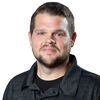



At etrailer.com we provide the best information available about the products we sell. We take the quality of our information seriously so that you can get the right part the first time. Let us know if anything is missing or if you have any questions.











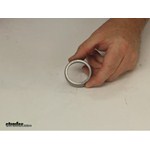





















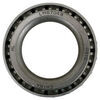




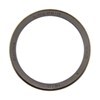


















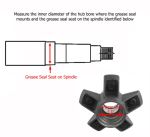
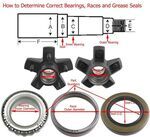


Thank you! Your comment has been submitted successfully. You should be able to view your question/comment here within a few days.
Error submitting comment. Please try again momentarily.